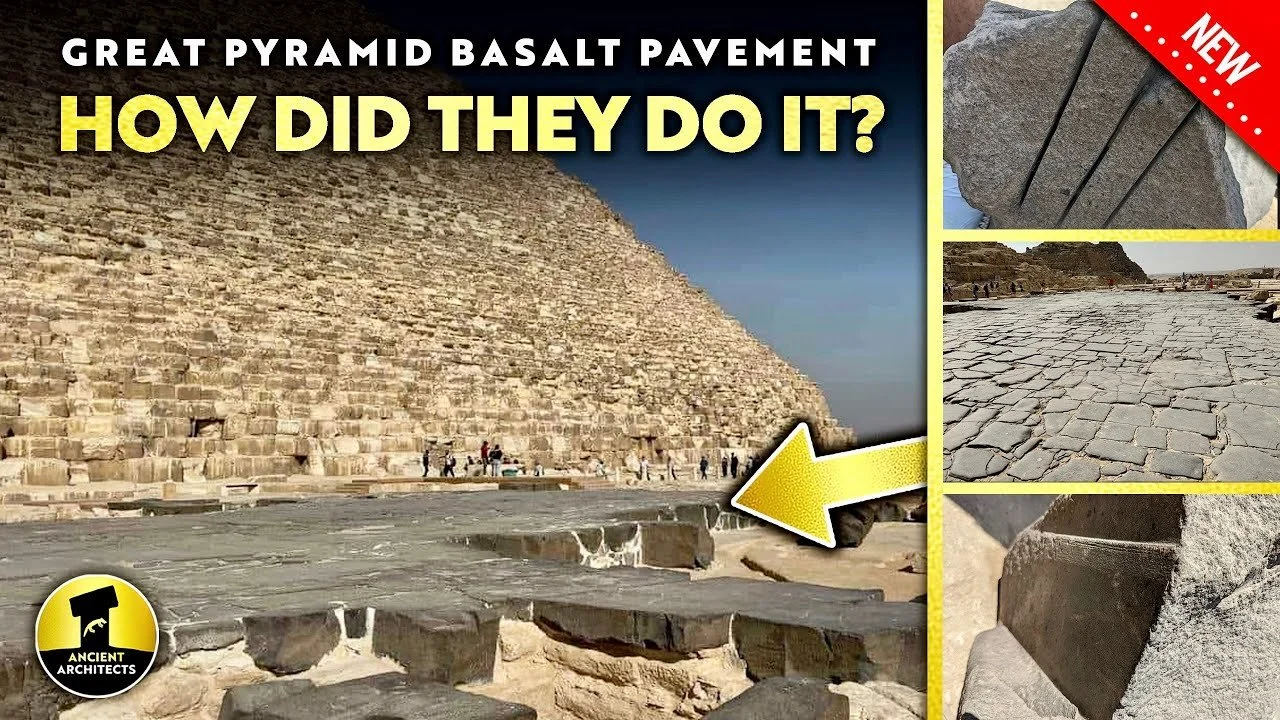The Basel pavement on the eastern side of the Great Pyramid in Giza is a popular talking point for those who believe in lost ancient high technology in ancient Egypt. The pavement consists of hard basalt stones that were used to pave Kufu Mortuary Temple's great court and is situated in a central position on the pyramid's eastern side. The temple had a black basalt floor, red granite pillars, and white limestone walls, which were likely adorned with colorful reliefs. The Basel pavement is a favorite topic for those who believe in a lost ancient high technology in ancient Egypt as it is a hard rock with specific cut marks on some of the rock faces, and it is unclear how it was cut and shaped. Basalt was initially used in Egypt for small vessels in the late pre-dynastic period and was first employed on a monumental scale in the Old Kingdom for pavements in numerous pyramid temples.
Basalt is an extrusive volcanic rock with a fine-grain crystalline texture that forms from rapid cooling of molten rock. Its composition differs from source to source, affecting its properties, including its hardness and durability. Natural outcrops of basalt weather quite quickly, making it easier to work but not give a good finish. The only basalt source where there is evidence of Old Kingdom quarrying on a grand scale is at the Jebel El katran geological formation in the northern fire around 58 km from Giza.







